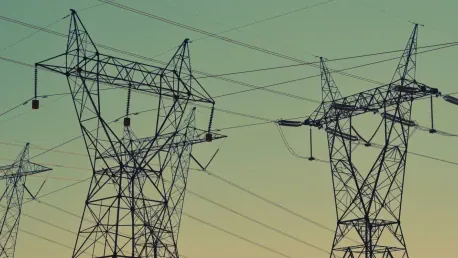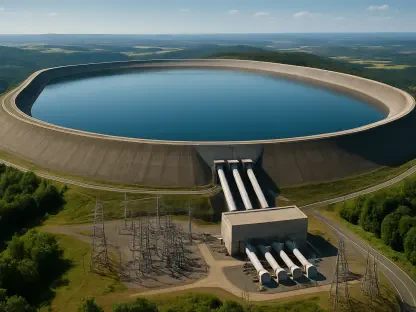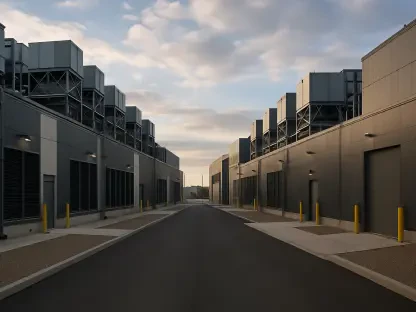Carlos Ortegains recently sat with Christopher Hailstone, an expert in energy management, renewable energy, and electricity delivery, to discuss LS Power and its latest developments. Christopher Hailstone, our Utilities expert, shared his insights on the company’s strategy and ongoing projects.
Can you share more information about LS Power and its history in power generation?
LS Power has a significant history in power generation, having been founded in 2009. The company has developed and acquired over 47GW of power generation across a diverse portfolio of energy assets. This includes everything from traditional gas-fired plants to renewable energy projects. LS Power has consistently pushed the envelope in terms of both energy production and efficiency.
What is the significance of LS Power’s Doswell Power Plant in Ashland, Virginia?
The Doswell Power Plant is a cornerstone of LS Power’s generation capacity. Situated in Ashland, Virginia, it’s a 340MW gas-fired plant that has played a vital role in local and regional energy supply. Having been operational for several years now, the plant includes Doswell Units 2 and 3, which have traditionally been integral to the grid’s reliability.
How long has the Doswell Power Plant been operational?
The Doswell Power Plant has been operational for quite some time, although specifics on the exact duration of operation could vary. Generally, these types of plants have life spans extending over several decades.
What kind of power generation have Doswell Units 2 and 3 been involved in previously?
Doswell Units 2 and 3 have been involved primarily in gas-fired power generation. These units have contributed significantly to meeting both peak and base load demands in the region, ensuring a stable supply of electricity.
What made LS Power decide to sell up to 300MW from Doswell Units 2 and 3 to a new data center?
Several factors likely influenced this decision. Firstly, the burgeoning demand for data centers, driven by the increase in digital activities, has created new opportunities for power sales. By entering a Power Purchase Agreement with a data center, LS Power is diversifying its customer base and securing a long-term revenue stream for a significant portion of its generation capacity.
Could you elaborate on the terms of the Power Purchase Agreement with the data center?
The Power Purchase Agreement spans five years and involves selling up to 300MW of power to the data center. This will include a new interconnection service agreement to integrate Doswell Units 2 and 3 with the PJM Transmission System. Essentially, it commits LS Power to provide a reliable source of electricity to ensure the data center’s operational integrity.
What does a five-year agreement entail in this context?
A five-year agreement typically guarantees a set amount of power delivery over that period, ensuring a stable revenue stream for LS Power while providing the data center with a reliable supply of electricity. This mutually beneficial arrangement helps both parties plan and operate more efficiently.
How will the new interconnection service agreement work to integrate Doswell Units 2 and 3 with the PJM Transmission System?
The interconnection service agreement will outline the technical and operational requirements needed to connect Doswell Units 2 and 3 to the PJM Transmission System. This ensures that power generated at the Doswell plant can be seamlessly delivered to the data center and integrated with the broader grid.
What do we know about the planned behind-the-meter data center?
The planned data center is expected to consist of five 60MW buildings, each designed to be “always-on” and mission-critical. The campus will be developed in phases, with one building constructed each year, enhancing the data center’s capacity incrementally.
Who is the owner or developer of this new data center, if that information is available?
Currently, the developer or owner of the new data center has not been publicly disclosed. Such details are often withheld for competitive or strategic reasons.
Could you describe the phased construction plan for the data center campus?
The phased construction plan involves building one out of the five planned 60MW data center buildings each year. This approach allows for gradual scaling of operations, reducing initial financial outlays and providing flexibility to adapt to any evolving technological or market conditions.
What is meant by “always-on, mission-critical” data center buildings?
“Always-on, mission-critical” refers to data centers that must operate continuously without any interruption. These facilities are essential for services that require high reliability and uptime, such as financial institutions, healthcare systems, and other sectors where downtime could lead to significant losses or risks.
How will the data center remain “always-on”?
The data center will likely use advanced systems for power supply, including redundant power sources, uninterruptible power supplies (UPS), and potentially even on-site power generation capabilities to ensure continuous operation.
What constitutes “mission-critical” operations in such a data center?
Mission-critical operations are those that must always be available and operational. For example, data processing, storage, and transmission for critical applications like emergency services, financial transactions, and healthcare operations.
What do we understand about Old Dominion Electric Cooperative (ODEC)’s opposition to the project?
ODEC has raised concerns regarding the details in the Necessary Studies Agreement. They argue that the agreement lacks specific information, such as the data center’s construction timeline and when it will start drawing power from the grid, necessary for a comprehensive impact study.
What specific details are ODEC claiming are missing in the Necessary Studies Agreement?
ODEC claims that the agreement lacks clarity on the construction schedule and power draw commencement, which are crucial for understanding the full impact on the PJM Transmission System and planning accordingly.
How important are those details for the project’s timeline and power requirements?
Those details are critical as they influence the planning and capacity management of the power grid. Accurate timelines and load expectations are essential for ensuring that the grid can accommodate new, large-scale power demands without compromising existing service reliability.
How does LS Power address the concerns that ODEC raised, specifically about the interconnection service agreements (ISAs) and large load accommodations?
LS Power is likely to work closely with FERC, PJM, and ODEC to provide the necessary details and adjustments to the interconnection service agreements. By addressing these concerns transparently and comprehensively, LS Power can mitigate potential delays and align the new project with broader grid management objectives.
What role does the Rappahannock Electric Cooperative play with the Doswell power plant, and how does it affect the negotiation or construction of the data center?
Rappahannock Electric Cooperative is a local utility provider serving the area around the Doswell Power Plant. Their role is crucial as they manage the local distribution infrastructure, which must be aligned with the new demands of the data center. Effective negotiation with Rappahannock is vital to ensure smooth integration and service continuation.
Could you provide a brief overview of LS Power’s portfolio and its achievements since its founding in 2009?
Since its founding, LS Power has developed a robust portfolio, including over 47GW of power generation across a variety of energy assets. These encompass traditional fossil fuels, renewable energy sources, and innovative storage solutions. Their portfolio reflects a balanced approach to meeting modern energy needs and sustainability goals.
What types of energy assets and power generation projects are included in your 47GW portfolio?
The 47GW portfolio includes natural gas-fired plants, wind and solar farms, hydroelectric projects, and battery storage facilities. This diversity enables LS Power to adapt to market demands and regulatory changes effectively.
How does the sale of power to the new data center fit within your overall strategy and future goals?
This sale aligns with LS Power’s strategy to diversify its revenue streams and cater to new market segments like data centers, which have unique and growing energy demands. It also showcases LS Power’s ability to create partnerships that enhance grid reliability and support modern technological infrastructure.
Do you have any advice for our readers?
Stay informed about the evolving energy market and consider how shifts in energy generation and consumption might present new opportunities or challenges. Whether you’re in the industry or a consumer, understanding these dynamics can help you make better decisions regarding energy use and investments.









